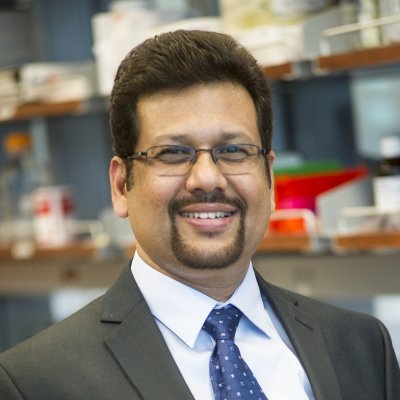Bijan Dey, University at Albany – Duchenne Muscular Dystrophy Testing Methods
 On University at Albany Week: Early detection is critical for combating Duchenne muscular dystrophy.
On University at Albany Week: Early detection is critical for combating Duchenne muscular dystrophy.
Bijan Dey, principal investigator at the RNA Institute, looks into better testing methods.
My laboratory studies the function of non-coding RNAs, epigenetics, and epitranscriptomics in skeletal muscle stem cell biology, cardiac muscle biology, muscle regeneration, and muscle degenerative diseases, including Duchenne Muscular Dystrophy (DMD) and DMD-associated cardiomyopathy. DMD is a devastating X-linked childhood muscle degenerative disease. There is no effective treatment available currently that can either cure or stop the progression of DMD. The development of successful therapy for DMD has been hindered due to the lack of a comprehensive understanding of the critical myogenic processes and DMD pathophysiology at the cellular and molecular level. Our goal is to understand the fundamental molecular mechanism of muscle development and devise new therapeutic and diagnostic platforms for DMD and related muscle degenerative diseases.
Duchenne Muscular Dystrophy Testing Methods
Duchene muscular dystrophy or DMD is the most common and severe form of childhood muscular dystrophies caused by a mutation in the Dystrophin gene. Although caused by a genetic mutation, skeletal muscle stem cells, which are the source of new muscles are gradually lost, followed by muscle wasting and weakness. By age twelve, children are confined to wheelchairs, and a few live beyond thirties.
The devastating effects of the disease can be mitigated if detected early, but sadly, early diagnosis is rare – hopefully until now. My colleague Igor Lednev and I discovered a method that we believe can improve the accuracy, ease, and early diagnosis of DMD.
Our research team, including Paromita Dey, Nicole Ralbovsky, and Andrew Galfano, used mouse models of DMD and analyzed blood serum with Raman hyperspectroscopy, a technique that produces a specific fingerprint for each sample. Combining this technique with advanced statistical analyses, we build a model system that can achieve a one hundred percent success rate in classifying healthy and diseased samples.
Current methods focus on detecting a specific biomarker or two, which can be present at very low concentrations during the early stages of the disease. Our method is advantageous because it probes the entire biochemical composition of the sample, giving us the ability to detect DMD earlier than any current method.


